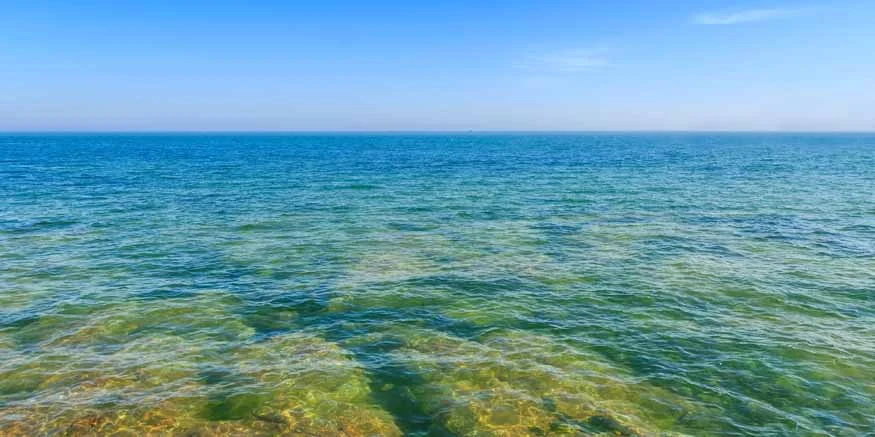Introducing young students to the world’s oceans is an exciting educational journey. It goes beyond geography, helping kids grasp the diverse marine environments that make up our planet. Let’s dive into the details of the five oceans, exploring their unique features, importance, and the significance of understanding these vast bodies of water.
Also read: Fun Ocean Activities And Experiment
Pacific Ocean: The Largest of Them All
Our journey begins with the largest and deepest ocean in the world, the Pacific Ocean. It covers an enormous area, encompassing more surface space than all the Earth’s land combined. Teach kids about the Pacific Ocean’s magnificence and its importance in connecting different continents. Show them the vibrant coral reefs and incredible marine life, such as whales and dolphins. Share captivating tales of explorers who bravely sailed the Pacific in search of new lands and cultures.
Fun Facts about the Pacific Ocean:
- The Pacific Ocean, the largest and deepest on Earth, covers 30% of the planet’s surface.
- It houses over half of the world’s free water and features the Ring of Fire, known for volcanic and tectonic activity.
- Iconic destinations like Hawaii, Fiji, and the Great Barrier Reef are found here.
Unique Marine Life Found in the Pacific Ocean:
- Whale sharks, the largest fish species.
- Giant clams that can weigh up to 200 kg.
- Elegant manta rays with wingspans up to seven meters.
- Ancient nautiluses, showcasing the ocean’s biodiversity.
Atlantic Ocean: A Hub of Maritime Activity
Next, we explore the Atlantic Ocean, which plays a vital role in connecting the Americas, Europe, and Africa. Dive into its grandeur and learn about the delicate dance of ocean currents and their impact on climate patterns. Highlight the importance of the Atlantic as a highway for trade and commerce, fostering global connections. Encourage kids to imagine the adventures of sailors and the treasures hidden beneath the Atlantic waves.
Fun Facts about the Atlantic Ocean:
- The Atlantic Ocean is the second-largest ocean, crucial for global trade and exploration.
- It has historical ties to the colonization of the Americas.
- Notable features include the Bermuda Triangle and the Mid-Atlantic Ridge.
Unique Marine Life Found in the Atlantic Ocean:
- Humpback whales and Atlantic puffins.
- Bluefin tuna and the diverse ecosystem of the Sargasso Sea.
Indian Ocean: Bridging Continents and Cultures
Moving on to the Indian Ocean, highlight its role in connecting Asia, Africa, Australia, and the Middle East. Introduce children to the diverse range of marine creatures and coastal civilizations. Share tales of ancient traders who crossed the Indian Ocean to exchange goods and ideas. Explore the spectacular coral reefs and unique ecosystems in its warm waters, fostering curiosity about the interconnectedness of the world.
Fun Facts about the Indian Ocean:
- The Indian Ocean is the third-largest ocean, connecting the Indian subcontinent, Africa, Asia, and Australia.
- It is shaped by the Agulhas Current and includes the Maldives, known for vibrant coral reefs.
Unique Marine Life Found in the Indian Ocean:
- Gentle dugongs, often called ‘sea cows.’
- Graceful manta rays with distinctive cephalic fins.
- Vibrant reefs with colorful coral and fish.
- The elusive coelacanth, a living relic of prehistoric times.
Southern Ocean: A Polar Playground
Introduce the Southern Ocean, which encircles Antarctica. Emphasize its unique role in regulating the climate and supporting diverse ecosystems. Explore the fascinating field of polar exploration, where scientists study the distinctive marine life in the Southern Ocean. Discover the importance of this polar playground in maintaining the health of our planet by regulating temperatures and providing habitat for seals and penguins.
Fun Facts about the Southern Ocean:
- In 2000, the Southern Ocean was formally recognized as a separate ocean, surrounding Antarctica.
- Known for its harsh environment, it supports iconic Antarctic animals like seals, whales, and penguins.
Unique Marine Life Found in the Southern Ocean:
- Resilient emperor penguins and vital Antarctic krill.
- Seals like the Weddell and leopard seals, adapted to icy waters.
- Majestic whales like humpback and killer whales, highlighting its critical role for marine mammals.
Arctic Ocean: The Smallest and Northernmost Ocean
Conclude our exploration with the smallest and northernmost ocean, the Arctic Ocean. Explore its species, icy landscapes, and the impact of climate change on this fragile environment. Examine the lifestyles and close connections to water of the indigenous peoples living in the Arctic. Instill a sense of responsibility to protect the Arctic ecosystem and understand its crucial role in the world’s climate systems.
Fun Facts about the Arctic Ocean:
- The Arctic Ocean is the smallest and shallowest, with icy waters within the Arctic Circle.
- It serves as a vital climate regulator, absorbing and redistributing heat.
- It hosts unique polar-adapted species such as polar bears, Arctic foxes, seals, and whales.
Unique Marine Life Found in the Arctic Ocean:
- Polar bears, narwhals, beluga, and bowhead whales.
- Seals and diverse fish, showcasing its unique ecosystem.
Also read: What Is The Water Cycle
Teaching Methods: Making Learning Fun
Explore innovative approaches to make learning about the oceans enjoyable and engaging for kids.
Interactive Maps:
Utilize colorful and interactive maps to visually engage kids in locating and identifying each ocean. This hands-on approach enhances their spatial awareness and geographical knowledge.
Ocean-themed Activities:
Incorporate creative activities like drawing, coloring, or crafting ocean scenes. This allows kids to express their understanding of each ocean and its unique features in a fun and artistic way.
Story Immersion:
Tell engrossing tales about marine life, ocean adventures, and secrets beneath the waves. Stories foster creativity and delight while dispensing facts.
Oceanography Games:
Explore educational games designed to teach kids about oceanography. These games can include quizzes, puzzles, and interactive challenges that make learning about the oceans enjoyable.
Also read: 20 Interesting Facts About the Oceania
Hands-On Ocean Projects: Bringing Learning to Life
Explore the depths of marine science with immersive and interactive activities.
Ocean Dioramas:
Encourage creativity by having kids create ocean dioramas. Using art supplies, they can design underwater scenes with different marine creatures and plants, reinforcing their understanding of ocean ecosystems.
Virtual Ocean Tours:
Look into internet resources that provide virtual tours of aquatic environments. Children can witness the beauty of coral reefs, the ocean floor, and the variety of marine life in these submerged areas.
Ocean-themed Cooking:
Incorporate a fun and educational cooking session by preparing snacks inspired by marine life. Use fish-shaped cookie cutters, blue Jello to represent the ocean, or create edible sea creatures with fruits. This activity connects learning with a practical and enjoyable experience.
Join EuroSchool as we take young students on an educational journey to discover the wonders of the “5 Oceans of the World.” Our dynamic method blends geography, inquiry, and discovery to give kids an engrossing experience that goes beyond textbooks. Our goal is to cultivate a love of geography and the environment by introducing students to the vast marine ecosystems and inspiring awe in them through experiential learning. Come along with EuroSchool for an educational experience where learning meets fun and curiosity takes young minds on a voyage of exploration.









